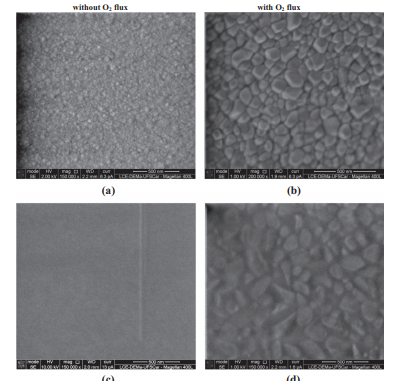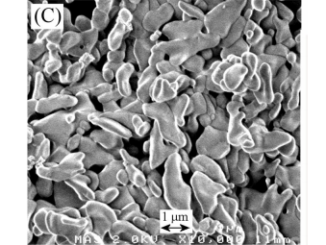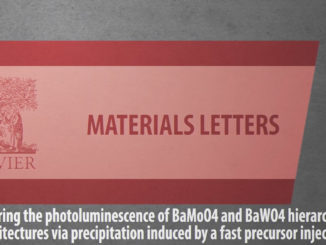
Near-infrared light emission of Er3+-doped zirconium oxide thin films: An optical, structural and XPS study
Abstract: This paper investigates the near-infrared emission and structural properties of Er3+-doped zirconium oxide thin films modified with a fixed content of zinc oxide. The films were obtained by electron beam deposition on Si(1 0 0) substrates, followed by a thermal treatment with or without a controlled oxygen flow. The samples were characterized by X-ray diffraction (XRD), X-ray photoelectron spectroscopy (XPS) and energy dispersive X-ray spectroscopy (EDX). Scanning electron microscopy (SEM) was used to evaluate the surface morphology, distributions and size of the grains in the films. The results confirmed significant changes in these films from thermal treatment with or without oxygen flow. Fourier transform infrared spectroscopy (FTIR) was used to analyze the absorption bands of the films. The photoluminescence (PL) measurement and 4I13/2 → 4I15/2 lifetime was measured under 980 nm near-infrared excitation. The effects of thermal treatment as well as the concentration of Er2O3 on the PL emission intensity and lifetime in the near-infrared region (from the 4I13/2 → 4I15/2 radiative transition) were studied. Thermal treatment under a controlled atmosphere increased the PL emission intensity due to a diminution of the residual OH groups, as confirmed by the XPS and analysis and FTIR spectroscopy. The film modified with 3 mol% of Er2O3 content annealed in oxygen flow shows an emission intensity of two orders of magnitude greater than the annealed film without oxygen flow at 1550 nm, nevertheless, the bandwidth was practically the same (7.6 nm) in both cases.
Author(s): Clabel, J. L. H.; Rivera, V. A. G.; Li, M. Siu; et al.
Journal of Alloys and Compounds
Volume: 619 Pages: 800-806 Published: 2015
DOI: https://doi.org/10.1016/j.jallcom.2014.09.007




